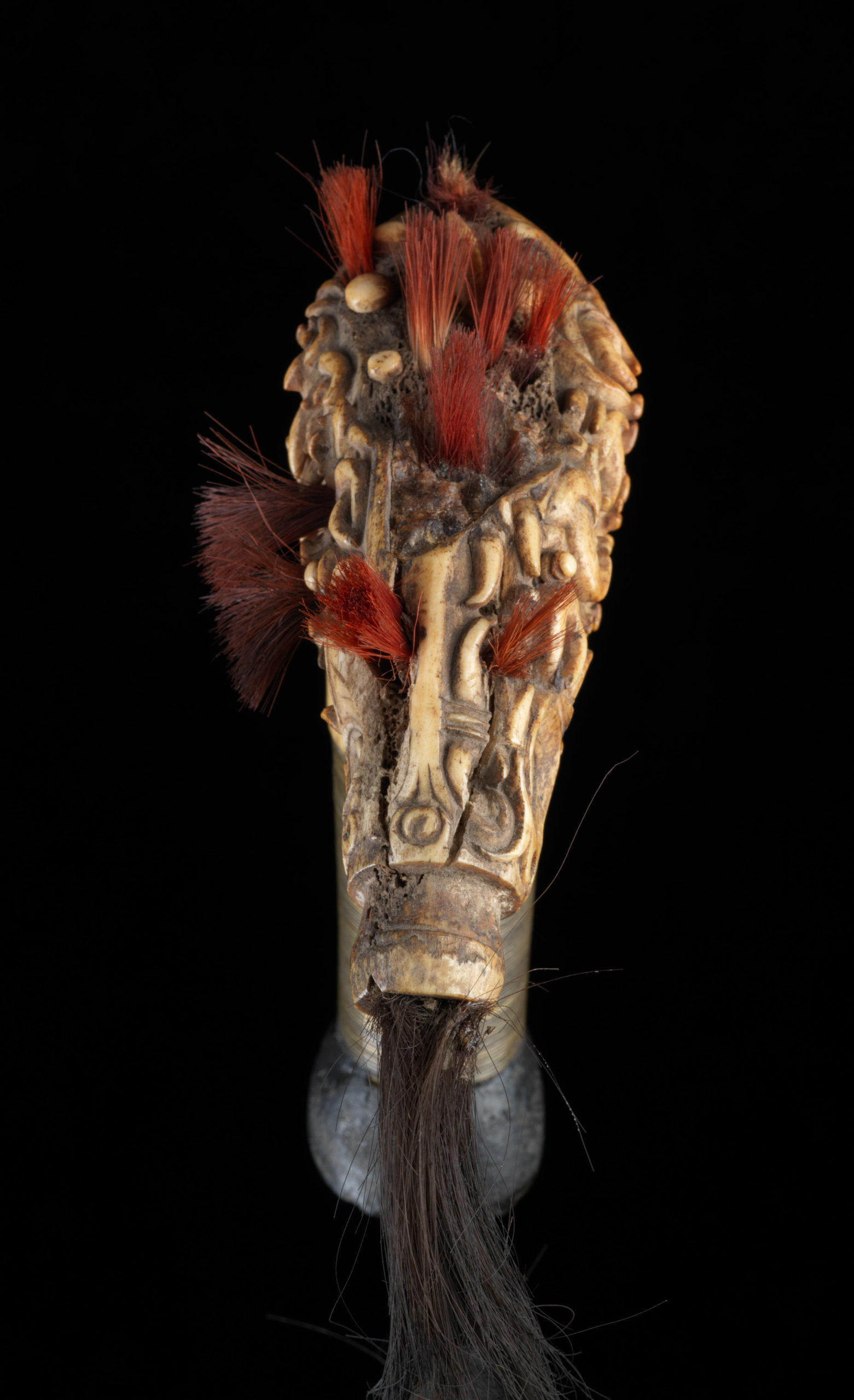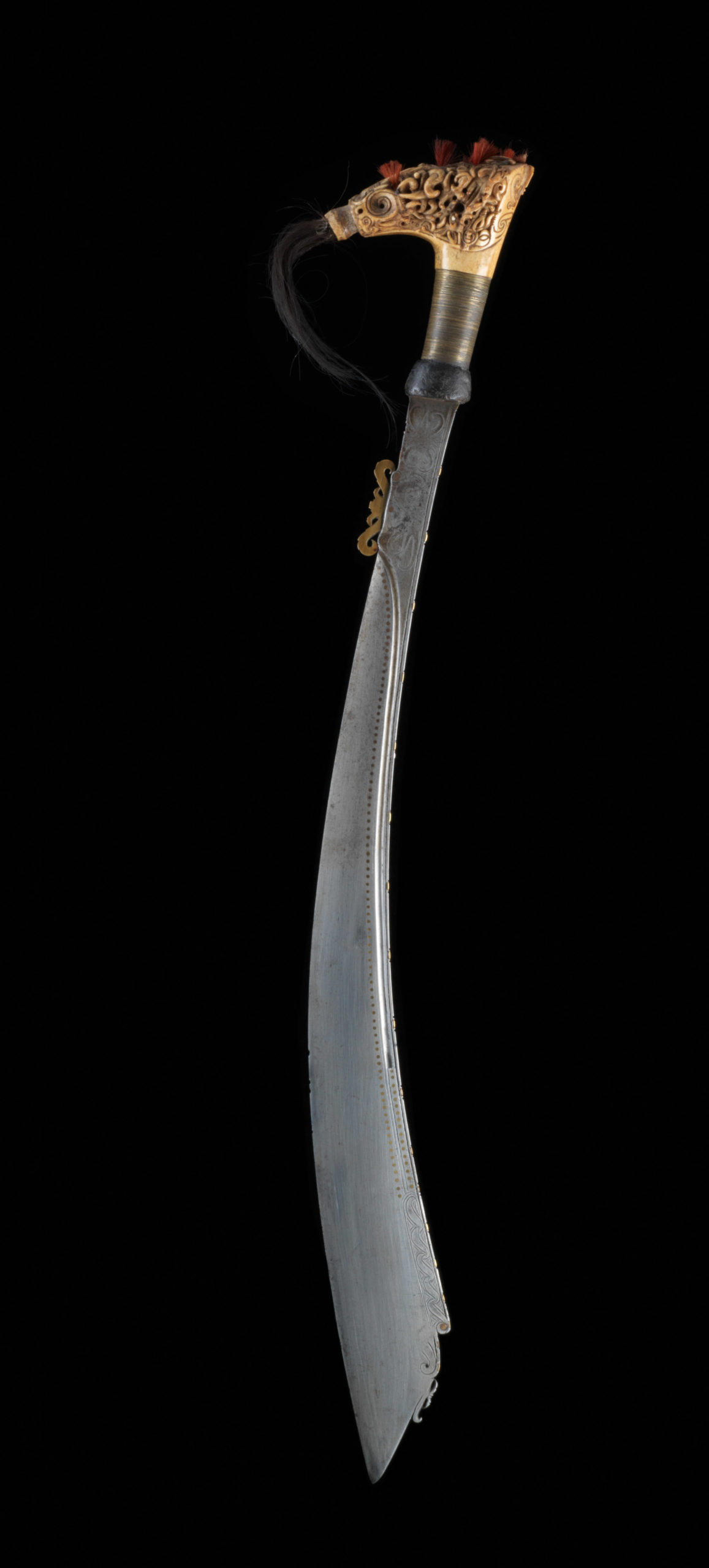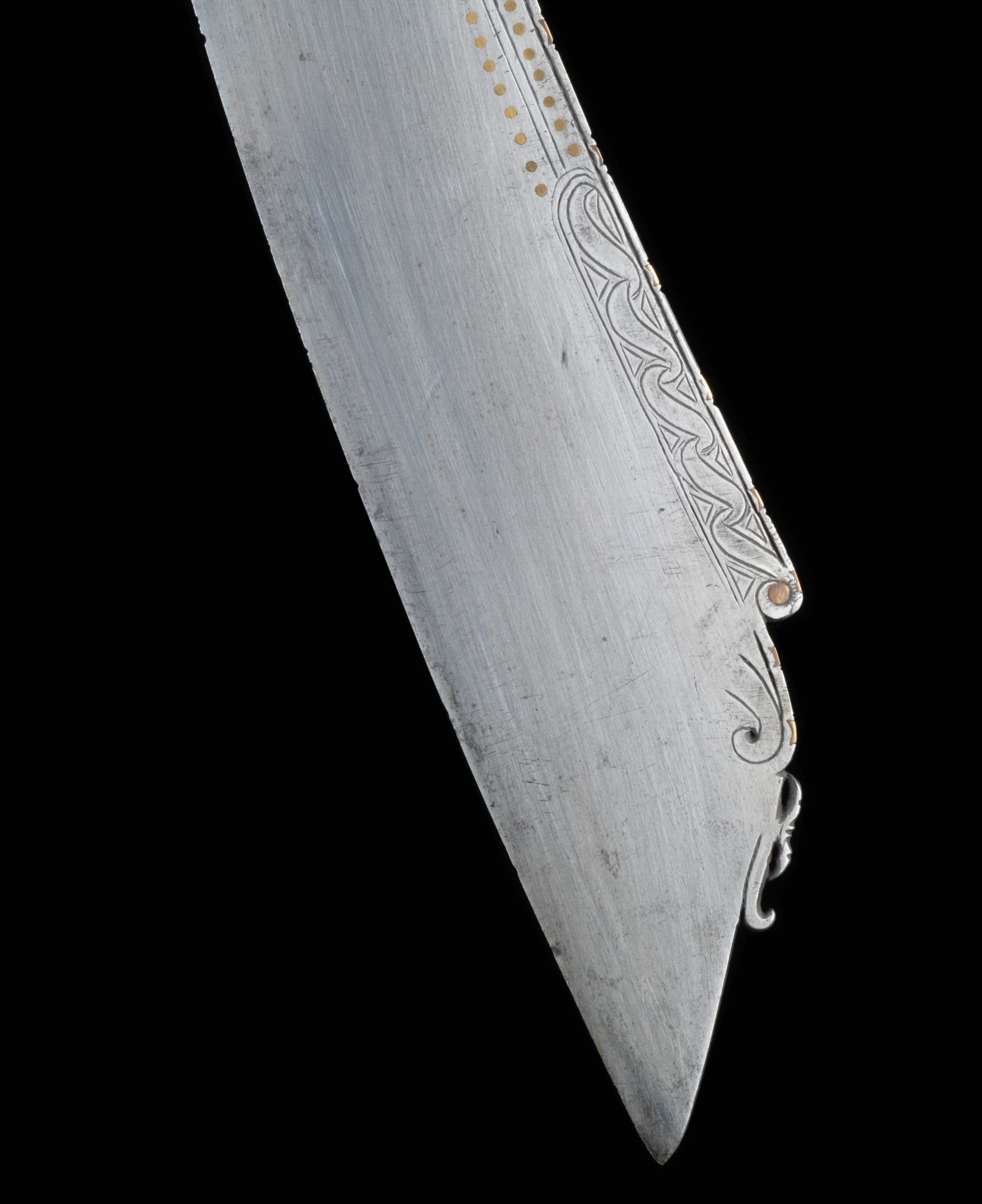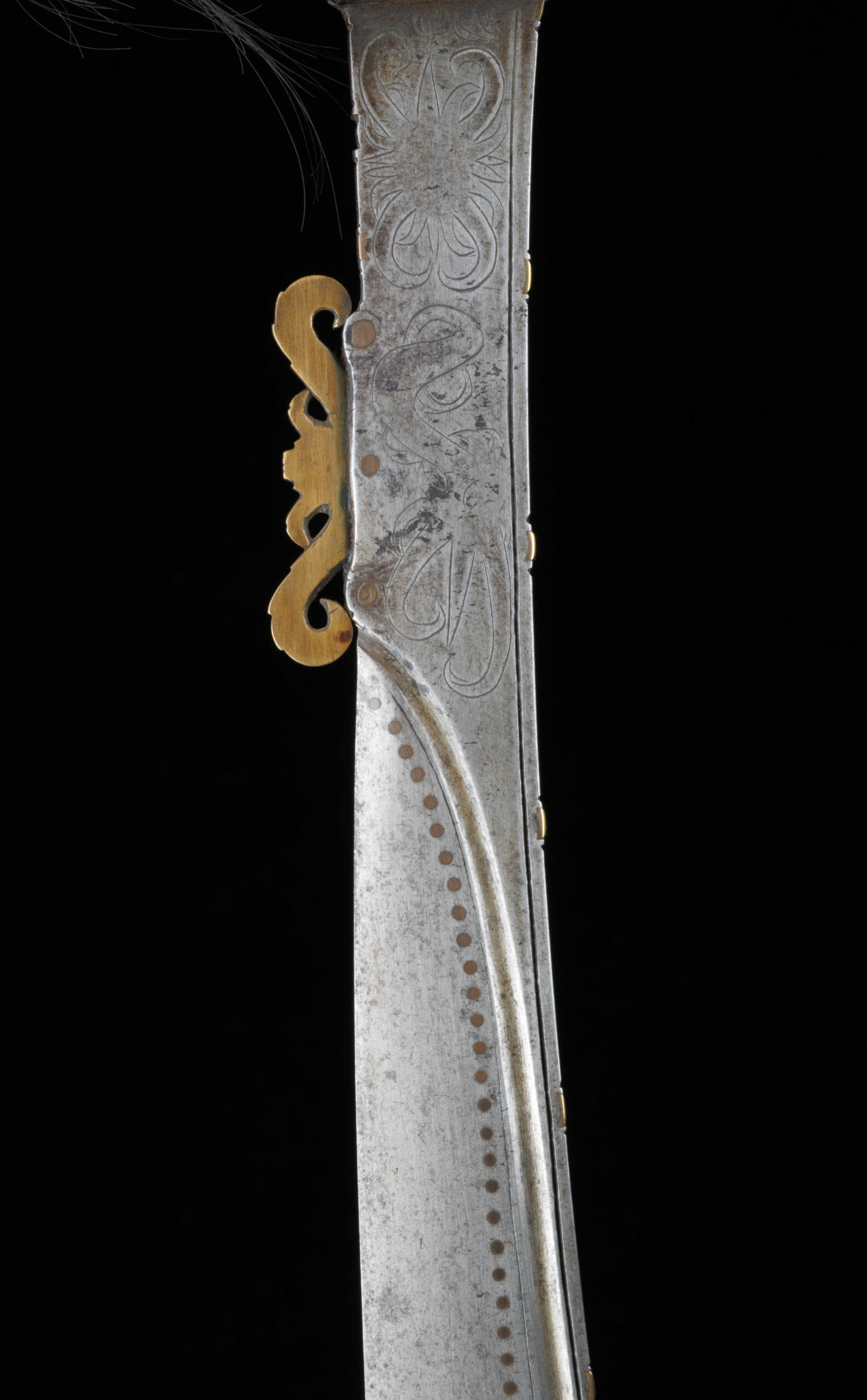Jimpul
| Object | Jimpul, “duku amat” |
| Culture | Borneo, West-, Sarawak, Dayak, Iban |
| Time | Early 20th century |
| Dimensions | Length 77 cm |
| Material | Steel, soft metal, stag horn, goat hair, human hair |
This jimpul can be assigned to the Iban. It is a very powerful, heavy weapon, which despite its weight of about one kilogram, of which the blade accounts for the largest part, is quite functional and relatively handy. The blade is made of carefully polished, industrially produced steel with a distinct hardening zone on the cutting edge. It shows traces of use.
The Iban, who are strongly influenced by the Muslim Sultanate of Sumatra and Borneo and are said to have been derived from immigration from Sumatra in the 14th – 16th century, hired by local rulers as a countermeasure against warlike Bidayuh and Illanun groups, favour the curved, symmetrically sharpened blade of Turkic-Ottoman and East African-Mamluk character. This is better suited as a primary offensive weapon than the mandau, which has strong tool-like characteristics, as it also serves as a cutting tool. The jimpul, on the other hand, is a pure (cutting) weapon, which was perfected in the ongoing battles of the late colonial period in Sarawak and Sabah. Jimpul from the period before the 19th century are not known; however, they may have had more gayang-like characteristics (i.e. they were slimmer and more like a mandau, but with a symmetrical cross-section). The impressive blade has brass applications and punched S-lines, a rudiment of the mata kalong of the Dayak from central and eastern Borneo.
The handle corresponds to the habitus of the blade. It is very powerful and appears very martial and almost bizarre. The suspended spiral, which embodies the headhunting or soul’s journey, the leitmotif of Borneo’s sword handles, determines the front, protruding part, while the leech motif, which goes back to limbs and parts of the aso dragon, has degenerated into a rampant tangle of claw-like elements. Between them, almost mischievously interspersed, are small heads, which indicate the purpose of the sword in a somewhat discreet way. In the upper part are red coloured goat hair tufts according to Kenyah tradition. The handle is wrapped with brass wire, a typical Iban element, which is a simplified and rather Malaysian-determined variant of the rattan weave common among the Kajan-mandau. A tuft of human hair is inserted at the “nose”.
The sword is a very impressive example of an Iban sword with traces of prolonged wear and use; the grip patina looks old and worn.
Supplementing Literature Back to room view









